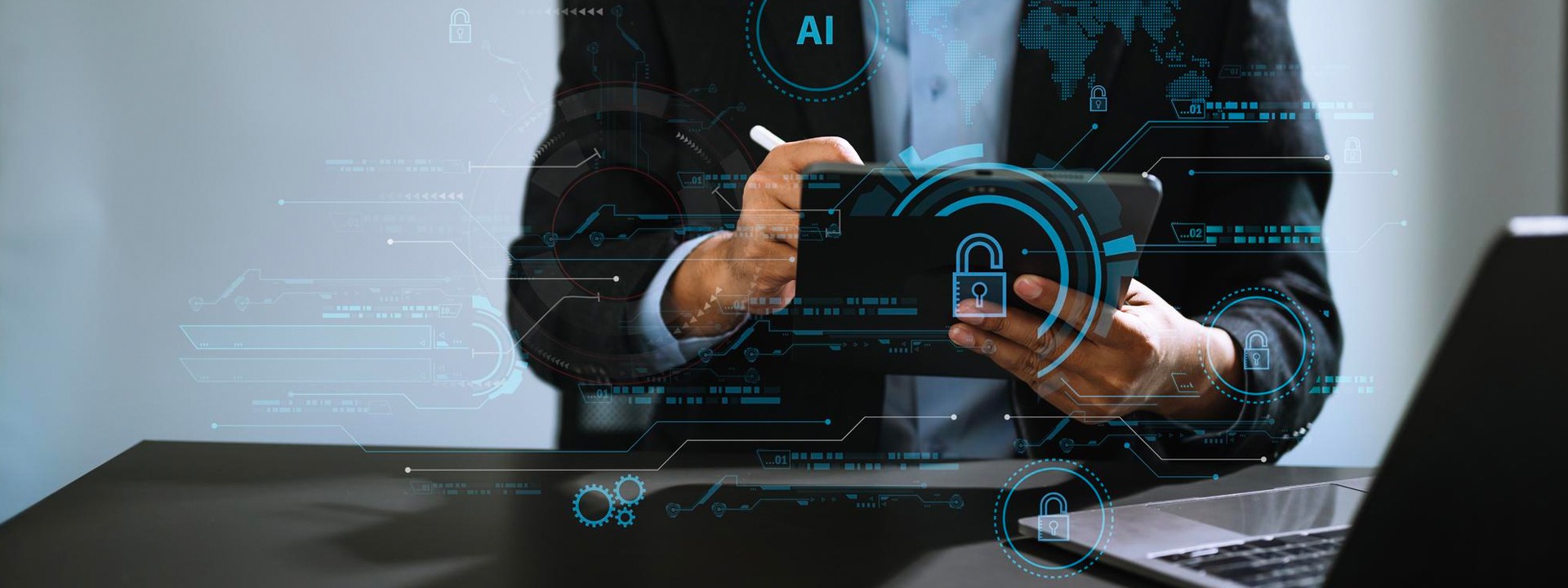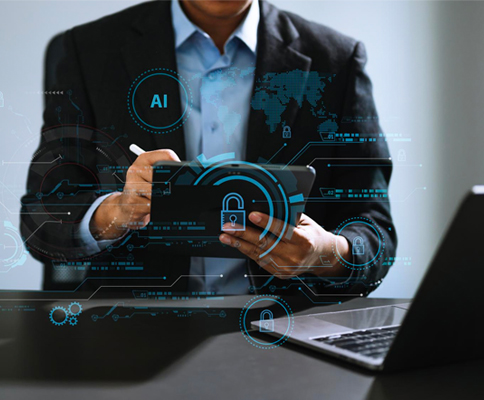In the words of Serene Davis, Global Head Of Cyber-QBE Insurance, “A breach alone is not a disaster, but mishandling it is.”. The field of cybersecurity is evolving rapidly with the current technological advances. Large organizations are constantly battling cyber criminals who put up regular cyber security threats, exploiting the vulnerabilities of small, medium, and large-scale firms.
Top 10 Cybersecurity Trends
According to IBM’s Cost of a Data Breach report, cybercrime is set to cost the world economy a gigantic sum of 10.5 trillion USD each year till 2025. It also predicted the average data breach to cost 4.45 million USD (a 15% increase on the previous three years). Essentially, it tells us only a robust cybersecurity strategy can shield IT domains against crime; so, here’s 10 cybersecurity trends to watch out for in 2023.
1. The Evolution of the Internet of Things
The IoT is expanding rapidly and creating numerous possibilities for various cyber crimes. It involves the combination of sensors and applications to design smart homes, smart workplaces and even an entire smart city. Machines can automatically request upgrades, stores can restock shelves, and lights can turn on as soon as someone enters a room. The IoT is truly magical and makes technology seamless.
That said, as soon as technology becomes a need, the related security issues tend to surge in parallel. Hackers can create cyber security threats by shutting down entire smart cities, causing disasters like controlling hospitals and preventing access to patient data. Most IoT devices lack storage capabilities, which evades all spaces for employing the right cyber security technologycyber security trends in 2023.
2. Remote Working and Cybersecurity Risks
The pandemic era was the time when cyber security awareness rose to the max. The entire world had to adopt remote working policies to battle the tough times. Even the current post-pandemic era has millions of people still working remotely.
Working remotely causes multiple cyber security threats when compared to office work, which is backed up by multiple routers, firewalls, and cyber threat intelligence measures run by trained IT professionals. Employees tend to use their personal smart devices to carry out two-factor authentications and log into mobile app versions of multiple platforms. This lack of awareness allows cybercriminals to gain entry on personal and sensitive information about the firm. Altogether, working from home may sound relaxing but it’s prone to multiple zero-day attacks, phishing scams, trojans, malware, and much more.
3. The Dominance of Artificial Intelligence
Increasing cyber security threats are tough for us humans to handle alone, and artificial intelligence (AI) has come to their rescue. AI and machine learning have been quite useful as a futuristic cyber security technology that can detect faces, process natural language, and detect potential data threats. However, the powers of AI can also fall into the wrong hands, making it both a boon and a curse.
While multiple AI tools are used for cyber threat intelligence, some of the cheaper ones can be a potential threat. Hackers already use deepfake tools and fake information to make money. We expect hackers will even use the likes of ChatGPT to create malware by dodging the minor protection measures. AI can create advanced malicious bots to infect networks and even steal data.
4. The Power of Machine Learning
Machine learning is a rapidly evolving cyber security technology designed to tackle cyber threats. It has all the abilities to process large amounts of data and address multiple threats. Cyber threat intelligence tools like machine learning can support security infrastructures through features such as real-time cybercrime mapping, pattern detection, and much more.
Machine learning is an effective cybersecurity trend in 2023 with its numerous powers like unsupervised learning, supervised learning, and reinforcement learning.
5. Increasing Cloud Security Threats
As we approach the future, the use of cloud computing services will soon become universal. However, this will also increase the risk of cyber security threats that can alter sensitive data. As per a recent survey report by Statista, 15 million data records were leaked due to cloud breaches in 2022. This number has only risen, now climbing by a further 37%. It is also predicted that – until the end of 2023 – hackers will continue targeting the cloud to access private data, including financial records, customer data, and much more.
Because of the significant benefits cloud solutions have for companies, countless named brands have already made the jump, even the London Stock Exchange (LSE) completed a deal with Microsoft in late 2022 to move to the cloud, the point being to upscale their work efficiency and accessibility. But this comes with its own baggage; now, there’s a need for cyber security awareness and secure cloud data transmission to prevent data loss due to unauthorized access by potential hackers.
6. The Birth of Cyber Insurance
Better known as cybersecurity insurance, cyber insurance protects businesses from multiple risk factors and data breaches. It helps in restoring customer data as well as recovering data while repairing damaged networks. Cyber insurance can be useful for businesses that face data breaches, ransomware, or phishing scams.
In their efforts to reduce their premium, companies have to demonstrate a foundational level of valid protection measures already in place. Gather all supporting information on the cyber security threat and prepare a solid report. This report is then investigated for insurance purposes and will later be used to determine further actions. Typically speaking, cyber insurance covers the following:
- Litigation expenses
- Regulatory defense expenses
- Costs related to crisis management
- Cyber extortion
- Regulatory defence fines
- Betterment to recover from the attack
7. The Need For Mobile Cybersecurity
Mobile security is a concern in today’s society, with mobile threats on the rise. With multiple free apps on the app store, data leakage is becoming common. Kaspersky detected about 3.5 million malware pieces on over a million user devices. Another cybersecurity threat concern raised by the increased use of mobile devices is network spoofing caused by hackers setting up fake access points resembling WiFi networks.
“Smishing” is another phishing scam caused by a lack of cyber security awareness amongst users. People are tricked into downloading malware-ridden links, which in turn disclose sensitive user information. AI and other complex cyber security technologies are constantly trying to prevent threats through smartphone updates. To avoid most threats, users are advised only to allow apps with permissions required to function. Apps asking for additional information should not be given access to handle user data.
As per a recent update by both Android and iOS, protocols are added to raise cybersecurity concerns, preventing users from apps that collect location data from users.
8. The Rise of Ransomware and Phishing
Designed to completely block access to systems until a user pays a hefty sum, ransomware is malicious software and is the next big threat to cybersecurity enthusiasts. The current technological era warns us to be cautious of frequent cyber security threats like ransomware attacks that can cause hefty financial blows to organizations whose entire systems or files are blocked until the ransom is made.
This malware is very dangerous for hospitals, call centers, and other important infrastructures. The “Wanna Cry” ransomware attack was one of the biggest cybersecurity attacks in England, where approximately 70,000 patient data files were corrupted. Thus, defense from potential ransomware requires a strong and holistic approach through futuristic cyber security technology capable of maintaining backups, developing efficient plans and policies, and reviewing port settings.
9. The Importance of Supply Chain Risk Management
Supply chain risk management (SCRM) is a set of strategies for managing supply chain-related tasks and responsibilities. Vendor risk management is also loaded in data privacy terms as a compliance regulation. The higher the cyber security awareness and knowledge of data visibility, the better for the organization.
SCRM can handle crucial tasks like managing personally identifiable information and protecting health information. Without a doubt, supply chain management should be (and is) a rising trend across modern cybersecurity markets.
10. The Practice of Multi-Factor Authentication
Another notable campaign to create cyber security awareness in 2023 was the promotion and use of multi-factor authentication (MFA). It’s a simple yet effective method of protecting accounts from hackers.
The standard login procedure for accounts is the classic email and password. Through MFA, essential login pieces of evidence in the form of factors are required to access account information. MFA secures user identity while boosting protection. BusinessWire found that multi-factor authentication revenue numbers reached an incredible 10 billion USD in 2020 and expects it to surpass 26 billion USD by 2026.
In effect, to lower the potential risks of hacking, cyber threat intelligence personnel are now referring back to using hardware security keys for verification purposes wherever possible.
Conclusion
Cybercriminals are adapting much-improved tactics to haunt enterprise networks and loot digital assets. The only way to stop their increasing power is to spread cyber security awareness. Steps like multi-factor authentication, regular software updates, investments in cyber security technology adoption, and monitoring systems can help to prevent cyber threats. All of the 10 trends we’ve talked about here can help businesses and governments considerably in 2023.



